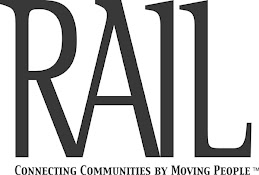 |
| Florida High-Speed Rail Rendering |
Given the opposition of those states' new administrations, Secretary of Transportation Ray LaHood announced that the combined investment would instead be channeled to 13 states. The largest of those selections were not altogether surprising. Up to $624 million will be made available to California to support the continued development of its ambitious high-speed rail network, which will ultimately link San Francisco to Los Angeles with branches to Sacramento and San Diego. The new award will build momentum on last week's selection of the initial segment in the San Joaquin Valley where construction will begin next year. California's high-speed network is the largest effort of its kind in the nation, and will also achieve its highest speeds – up to 220 mph – when the first stages open by 2017. The project has received consistently strong support from current Governor Arnold Schwarzenegger and incoming Governor-elect Jerry Brown.
Meanwhile, the first true U.S. high-speed route to begin operation – Florida's Orlando-to-Tampa corridor, to be underway in 2014 – also received a sizable award from the redistributed funding, up to $342 million. The additional investment will fully fund the project, and enhance prospects for expansion of the service from Orlando to Miami by the end of the this decade. While the effort received a lukewarm reception from Florida Governor-elect Rick Scott and U.S. Representative John Mica – the incoming chair of the House of Representatives' Transportation and Infrastructure Committee – full federal investment in the project likely cements its path forward.
Other substantial investments will be directed to Washington State (up to $161.5 million) and Illinois (up to $42.3 million) to further enhance their existing intercity rail corridors between the Canadian border and Oregon and from Chicago to St. Louis, respectively, to reach speeds up to 110 mph. Both projects received initial ARRA investment and have strong levels of state support for intercity rail service.
Somewhat surprising was a relatively small award to New York State (up to $7.3 million) for the continued development of its upstate corridor between Albany and Buffalo. Governor-elect Andrew Cuomo publicly sought-out a portion of the redirected funds just days after his election. Moreover, the project is one of the most promising settings for high-speed rail due to the extensive railroading infrastructure originally constructed by the New York Central that comprised the core of its famed Water Level Route between New York City and Chicago. Ample space in the corridor currently owned by CSX is available to install high-speed tracks dedicated to passenger trains, and a string of upstate's largest cities – Albany, Schenectady, Utica, Syracuse, Rochester and Buffalo – are all centered along the route, forming a solid potential ridership base. However, the state has lagged behind others – such as California, Florida and Illinois – in planning for high-speed rail, which likely is the largest factor in the limited federal investment in the project.
Other states receiving investment include Maine ($3.3 million to support the continued expansion of Amtrak's Downeaster from Portland to Brunswick); Massachusetts ($2.8 million for development of Vermonter service through western Massachusetts); Missouri ($2.2 million in support of its existing St. Louis - Kansas City service); Oregon ($1.6 million to upgrade that state's portion of the Cascades service); North Carolina ($1.5 million for the continued improvement of its statewide intercity rail program); Indiana (more than $364,000 for intercity routes to and from the midwest's Chicago hub); and Iowa (more than $309,000 supporting existing and expanded Amtrak service in the state). Interestingly, Wisconsin was redistributed up to $2.2 million for its current Hiawatha service between Chicago and Milwaukee, which Governor-elect Walker does support.




